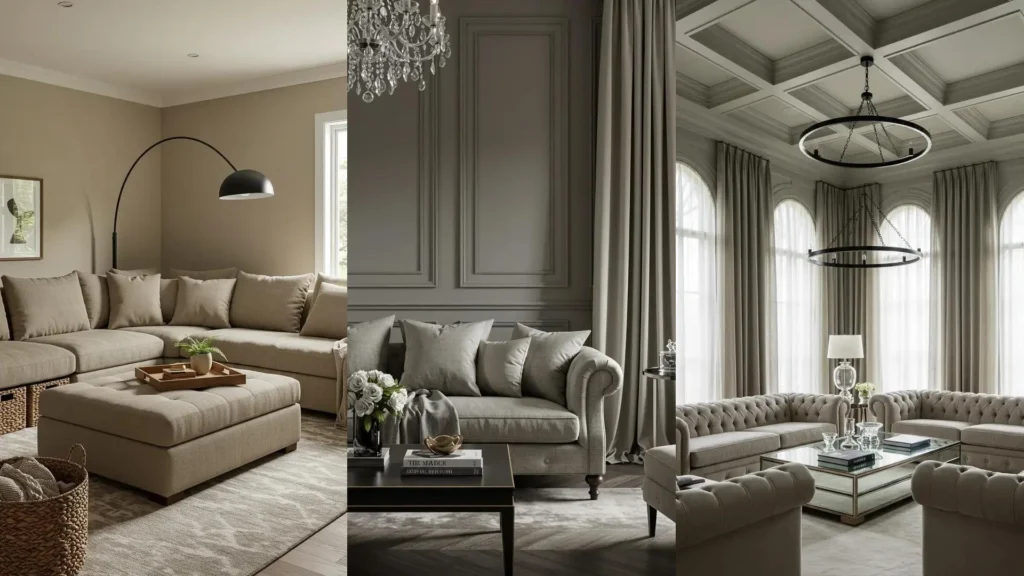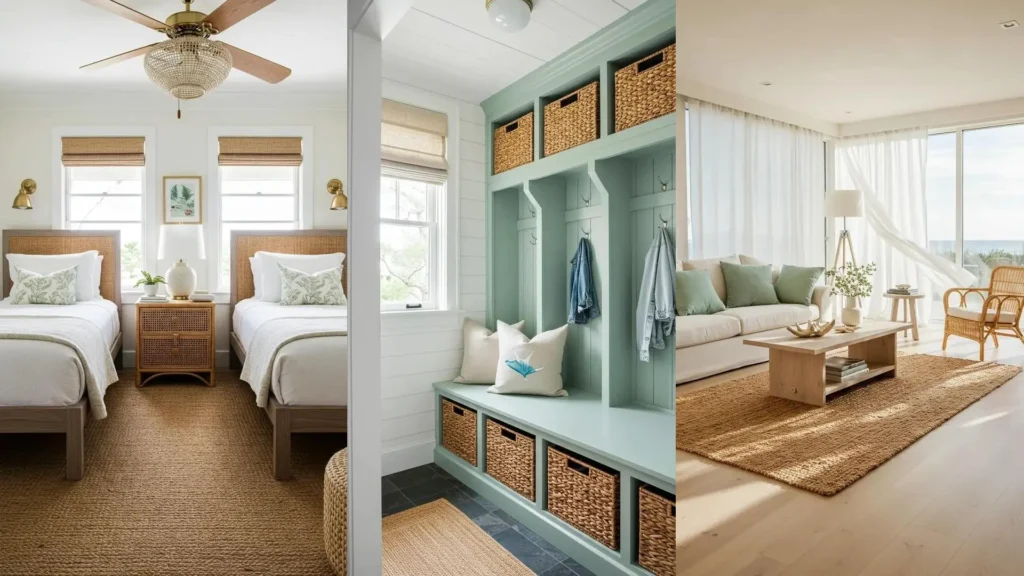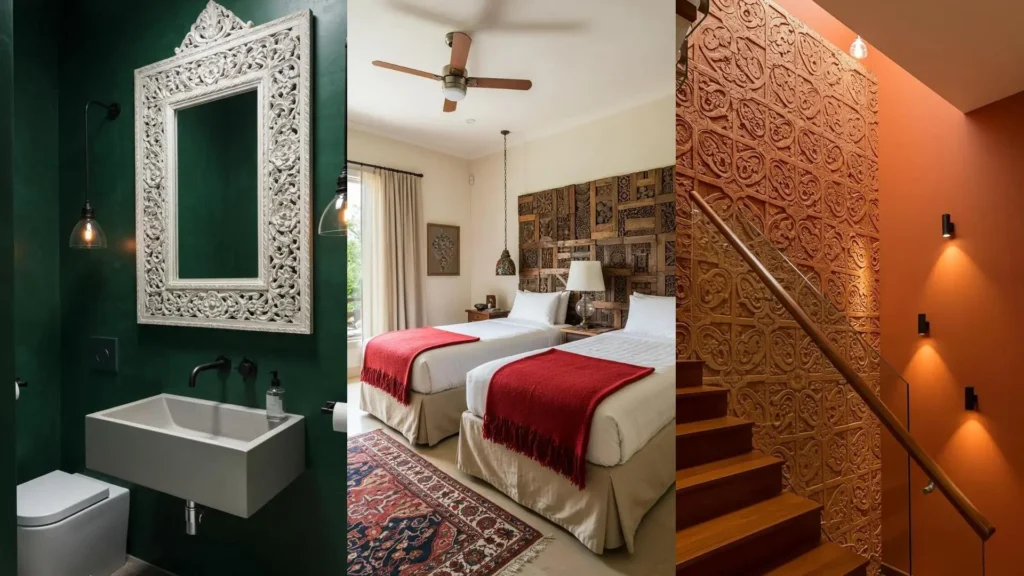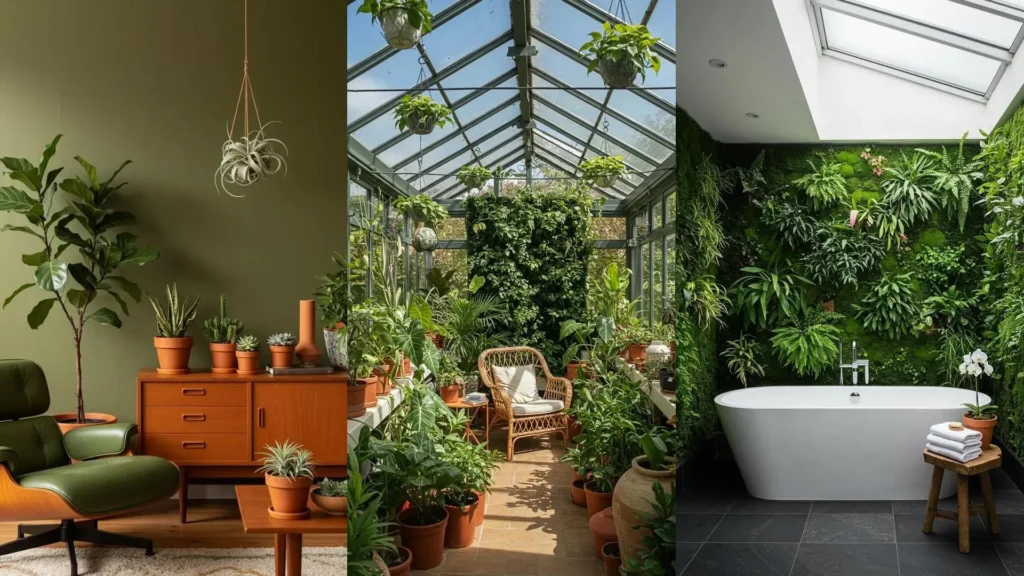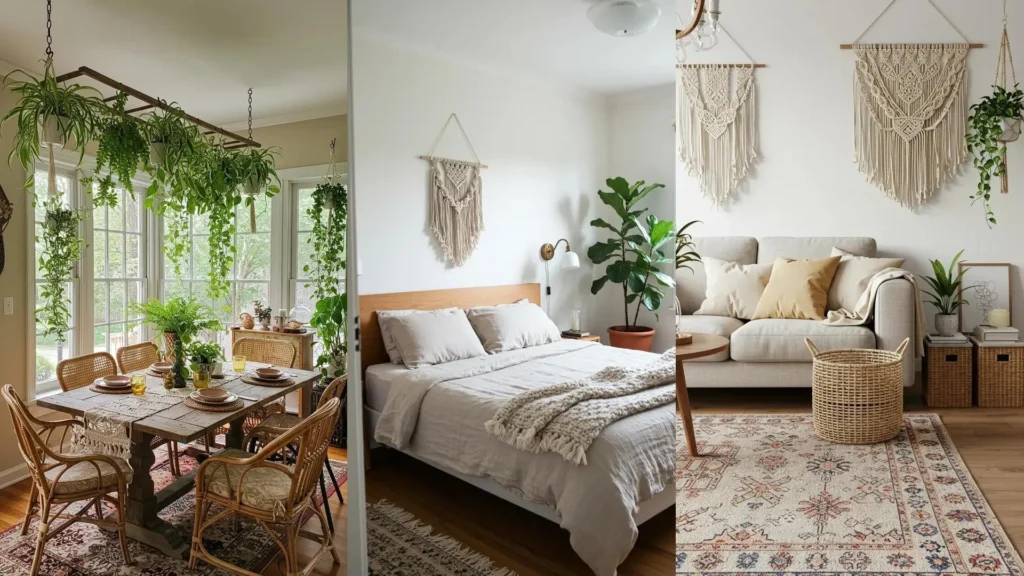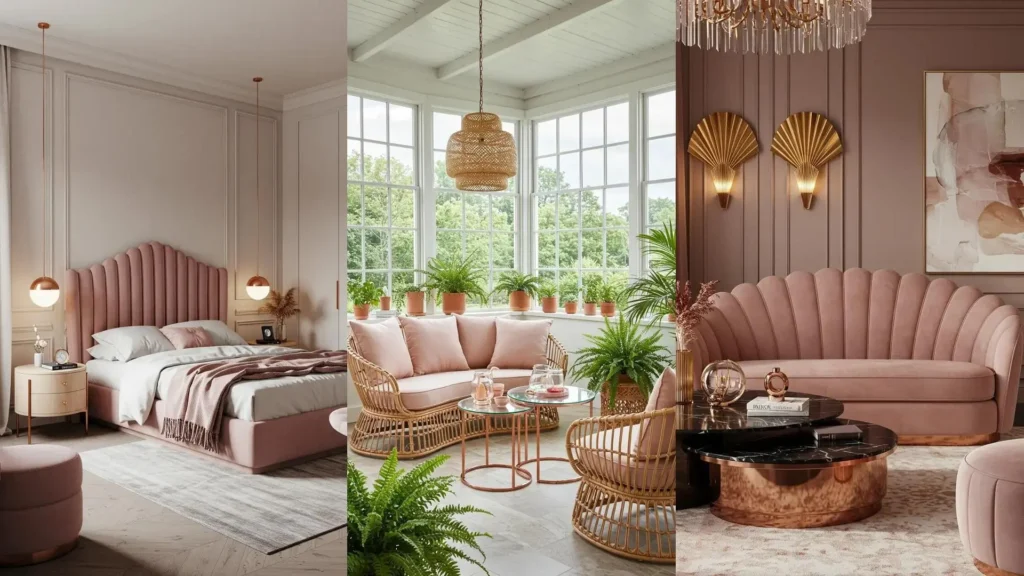There is a quiet power in a greige interior—a palette that is not quite gray, not quite beige, but something more complex and resonant.
It is the perfect foundation for a home that feels calm, collected, and deeply personal. But its success isn’t just about finding the right paint chip. It’s about understanding how to layer textures, manipulate light, and balance forms to create a space that feels both serene and full of life.
Think of these ideas not as rules, but as starting points. They are invitations to see your own home with fresh eyes, to make small changes with intention, and to build a sanctuary that truly restores you.
1. Master the Art of Subtraction
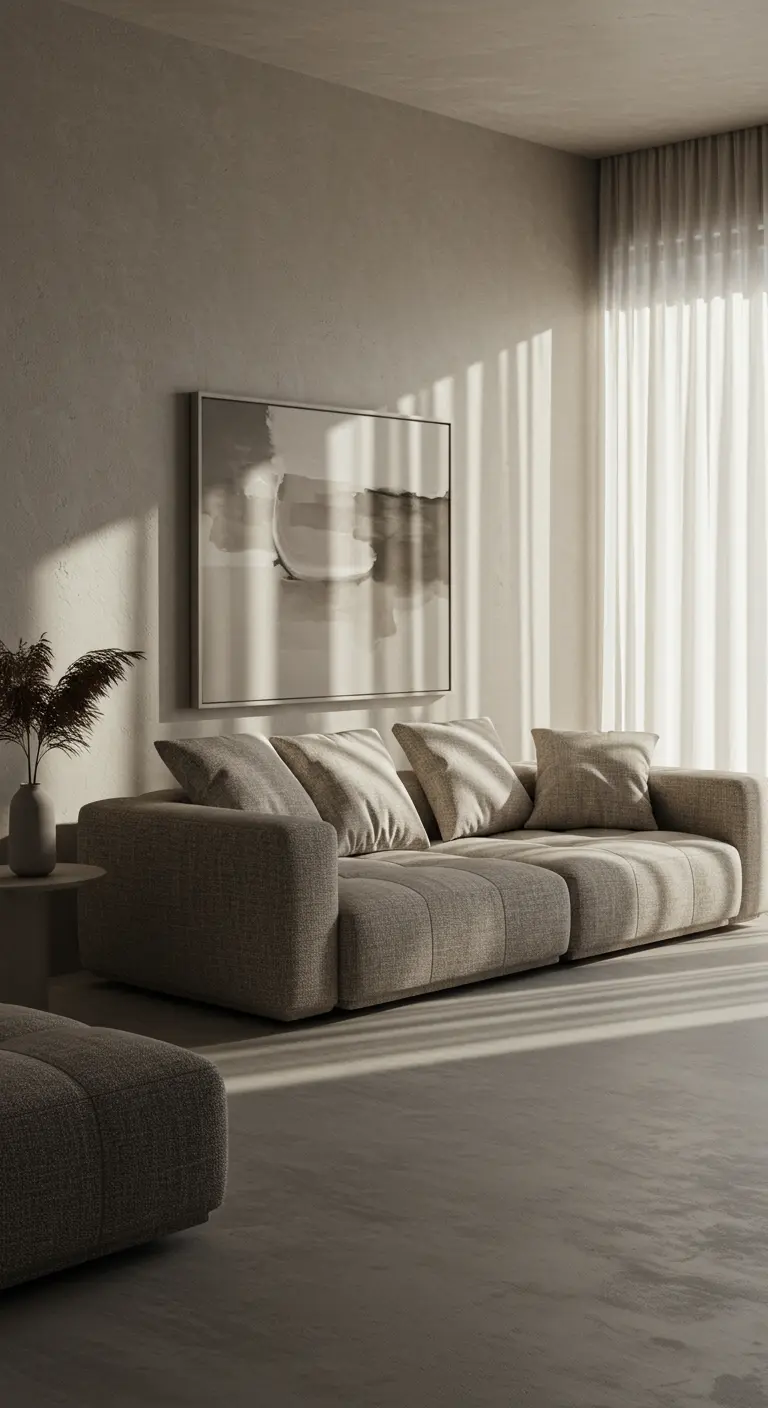
Embrace the philosophy that less is more by focusing on texture over color.
Walls with a limewash or matte plaster finish provide depth and a soft, light-absorbing surface that feels far more complex than simple paint.
Anchor the space with a low-profile, substantial sofa, and keep window treatments minimal with sheer, floor-to-ceiling curtains that diffuse sunlight into a gentle glow.
Instead of a gallery wall, choose one large, abstract piece of art in a similar tone to create a single, calm focal point.
2. Layer Light for a Softer Glow
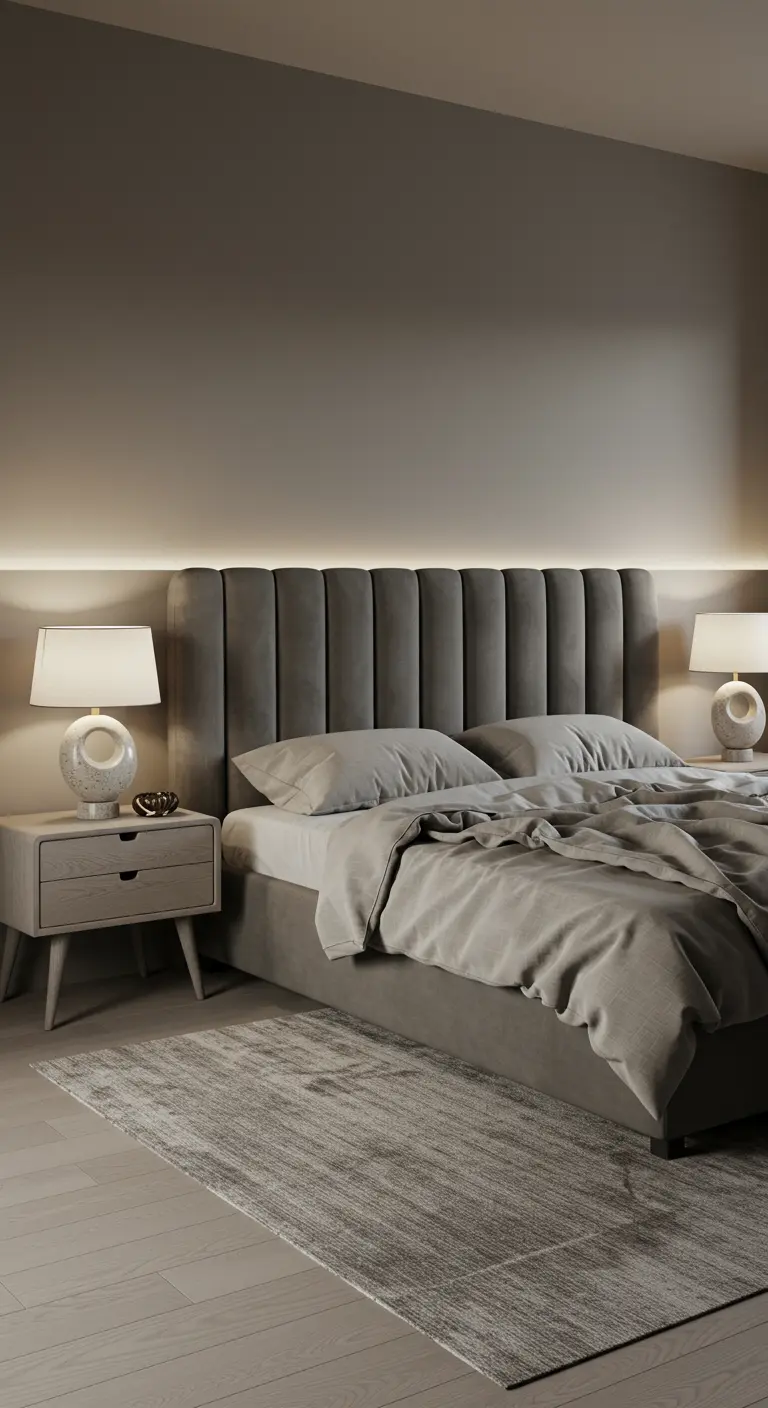
A truly serene bedroom depends on layered lighting, not a single harsh overhead source.
Install a hidden LED strip behind your headboard to cast a warm, ambient wash of light up the wall—this is your foundational layer.
Next, add task lighting with bedside lamps that have soft, sculptural bases and fabric shades to diffuse the light.
This combination creates a gentle and romantic scheme perfect for winding down, giving you options for reading or simply relaxing.
3. Soften Kitchen Lines with Sculptural Light
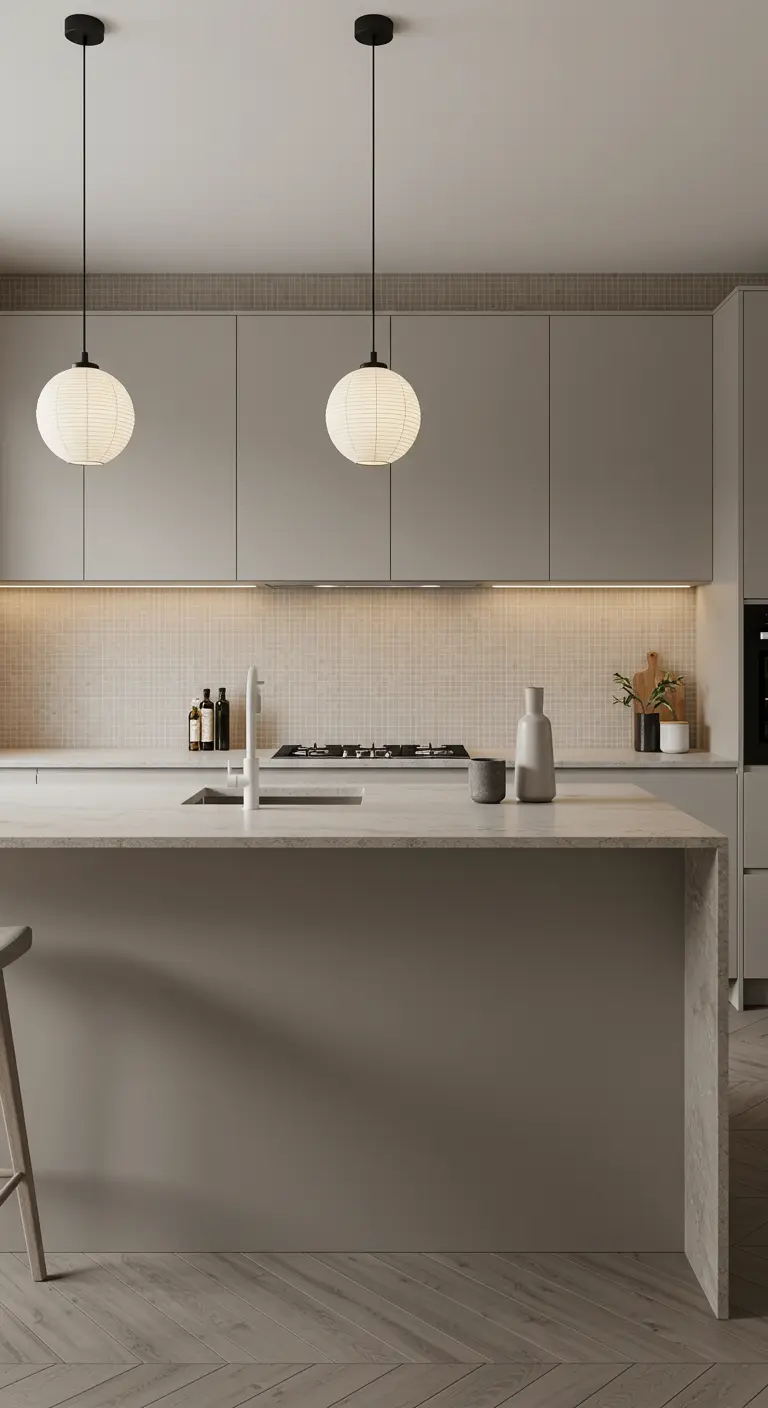
In a kitchen dominated by hard surfaces and clean lines, your lighting is an opportunity to introduce softness and organic form.
Swap out typical metal pendants for oversized paper lanterns, which borrow from Japandi design principles.
Their delicate structure and diffused glow provide a beautiful contrast to the crisp edges of slab-front cabinets and a stone waterfall island.
This single change can transform the entire emotional temperature of the room from purely functional to warm and inviting.
4. Unify Surfaces for a Spa-Like Calm
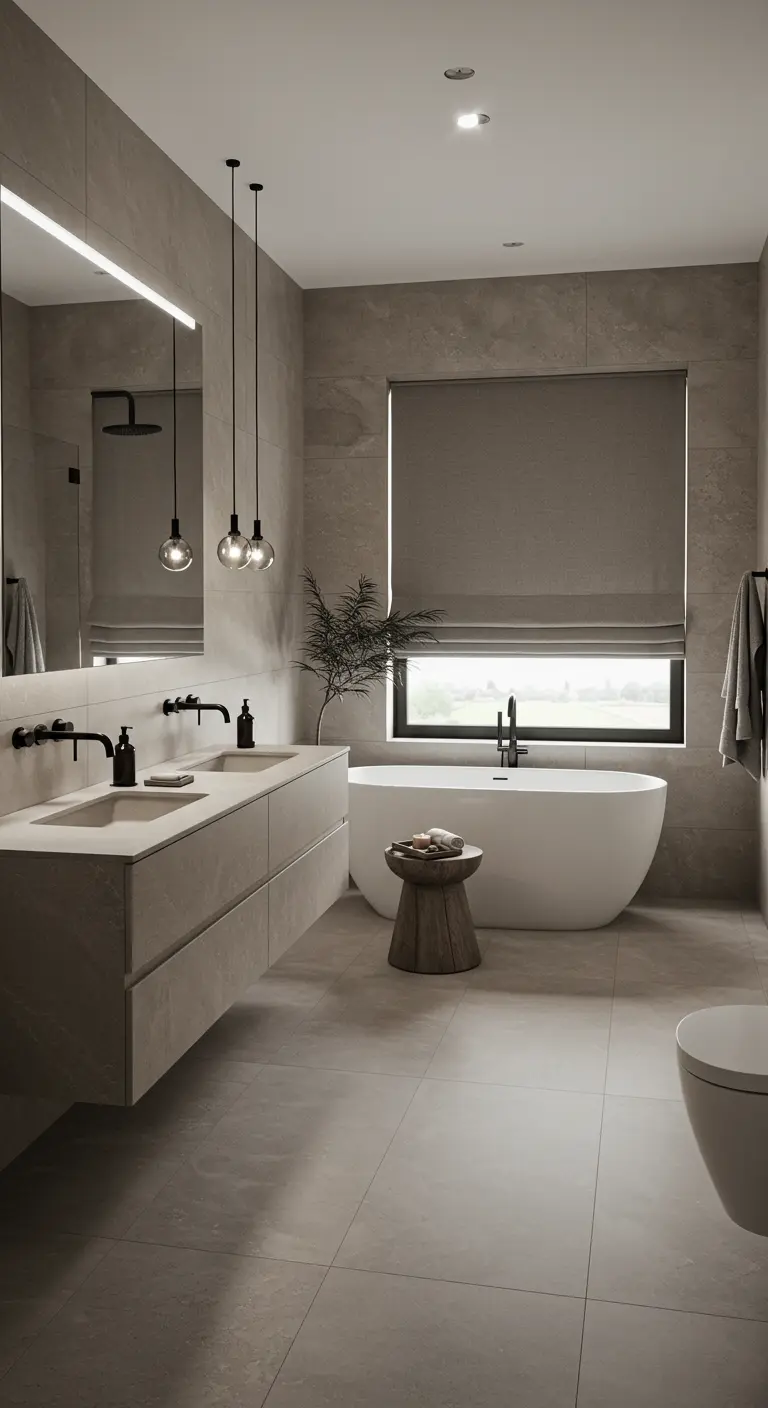
To create a truly immersive and serene bathroom, use the same large-format tile on both the floors and the walls.
This technique, known as monolithic design, eliminates visual breaks and makes the space feel larger and more tranquil.
Enhance the sense of openness with a floating vanity, which keeps the floor clear.
Finish with matte black fixtures—their sharp, graphic quality provides a sophisticated punctuation mark against the soft greige backdrop.
5. Embrace the “Color Drench” Technique
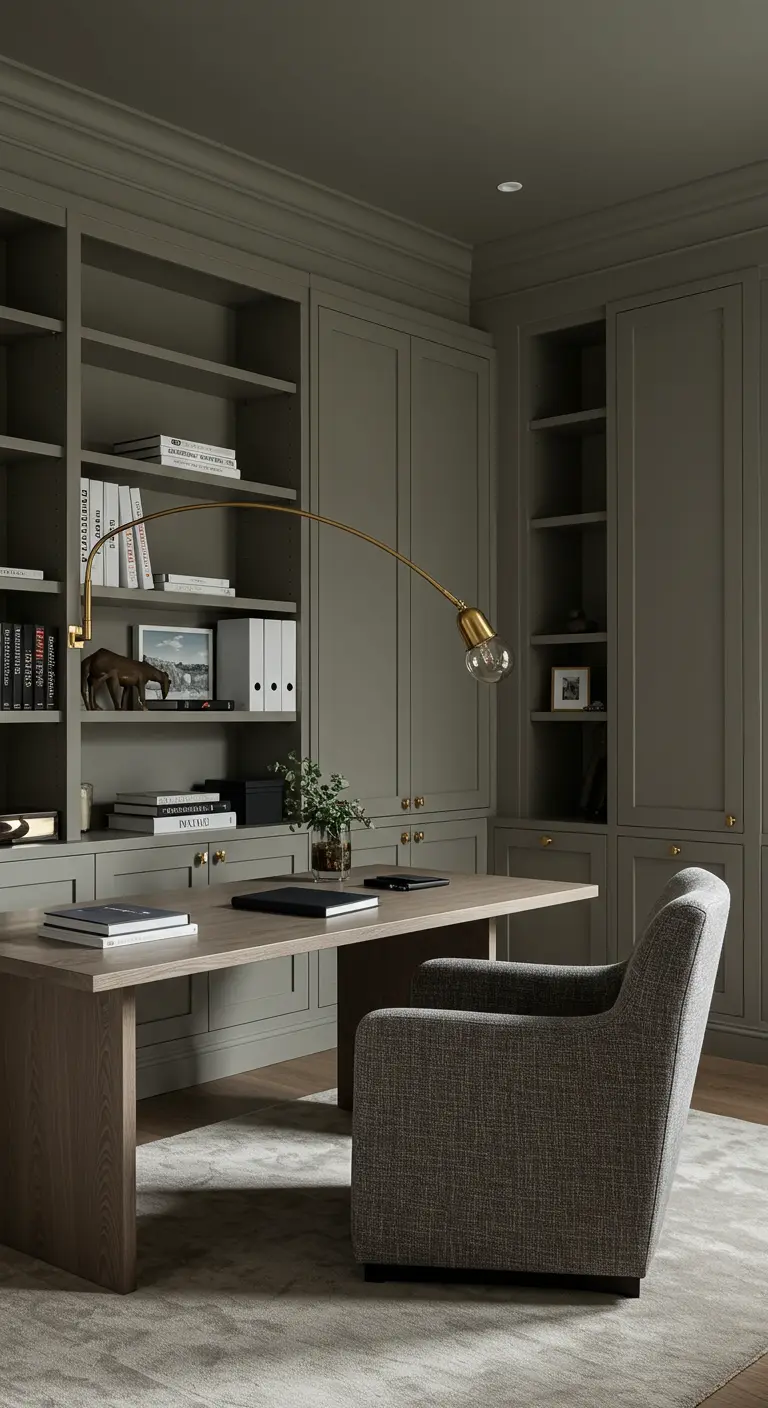
For a truly cohesive and high-impact look in a home office or library, use the “color drenching” method.
Paint your custom built-ins, the walls between them, and even the trim in the exact same shade of greige.
This envelops the room in a single hue, creating a sophisticated, calming environment where the texture of books and objects stands out.
It’s a powerful strategy that makes even simple built-in cabinets feel custom and luxurious.
6. Marry Raw Concrete with Refined Glass

The most compelling interiors are often born from contrast.
Pair a dining table with the raw, textural feel of concrete or plaster with a chandelier made of fine, frosted glass.
The heavy, grounding presence of the table is beautifully balanced by the light, ethereal quality of the fixture above it.
This eclectic pairing feels intentional and thoughtfully curated, elevating the entire dining experience.
7. Define Zones with Lighting and Form
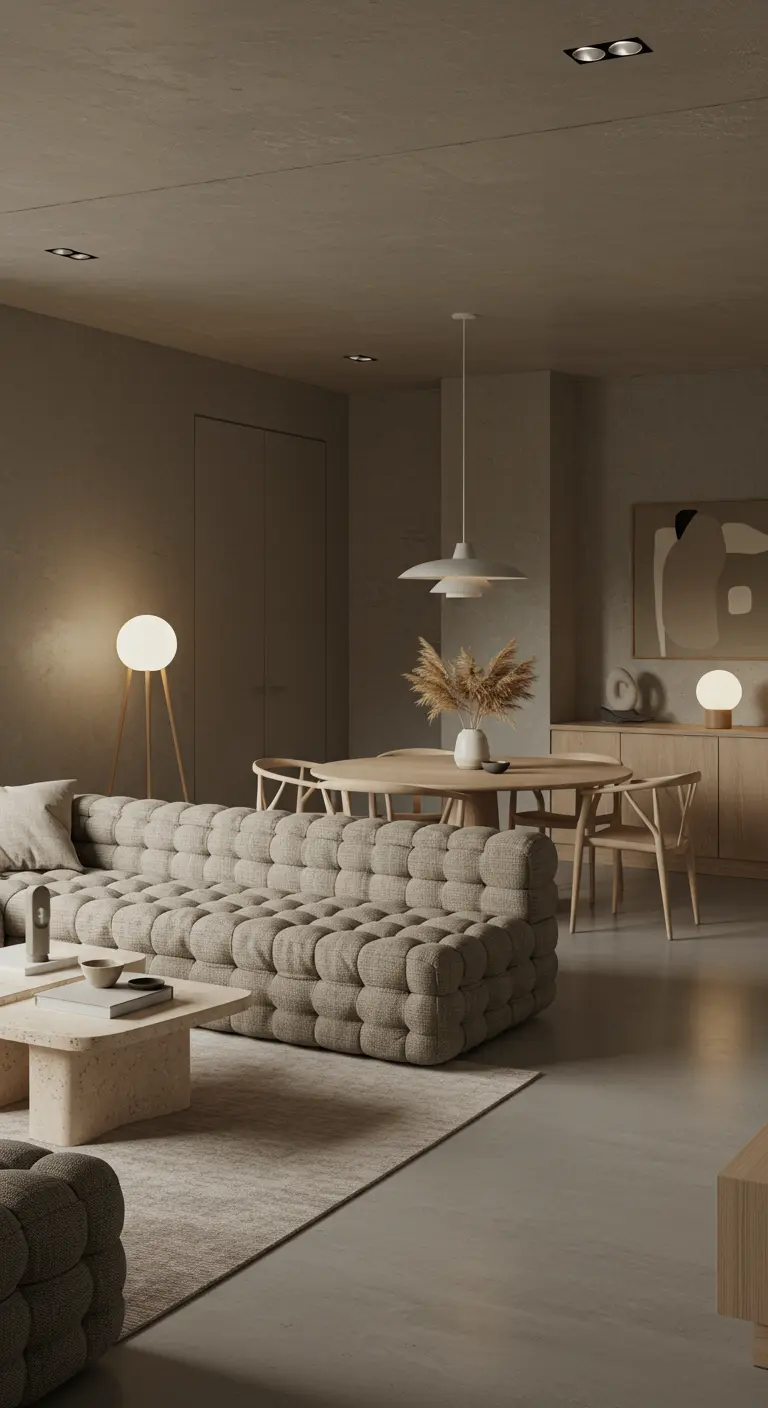
In an open-concept layout, you can create distinct ‘rooms’ without walls.
Use lighting to anchor each zone: a statement pendant over the dining table, a sculptural floor lamp by the sofa.
Further define the areas with furniture shapes—a round dining table encourages conversation, while a long, linear sofa signals relaxation.
A consistent palette of greige, wood, and other natural materials ensures the entire space flows together harmoniously.
8. Create Depth with a Moody Accent Wall
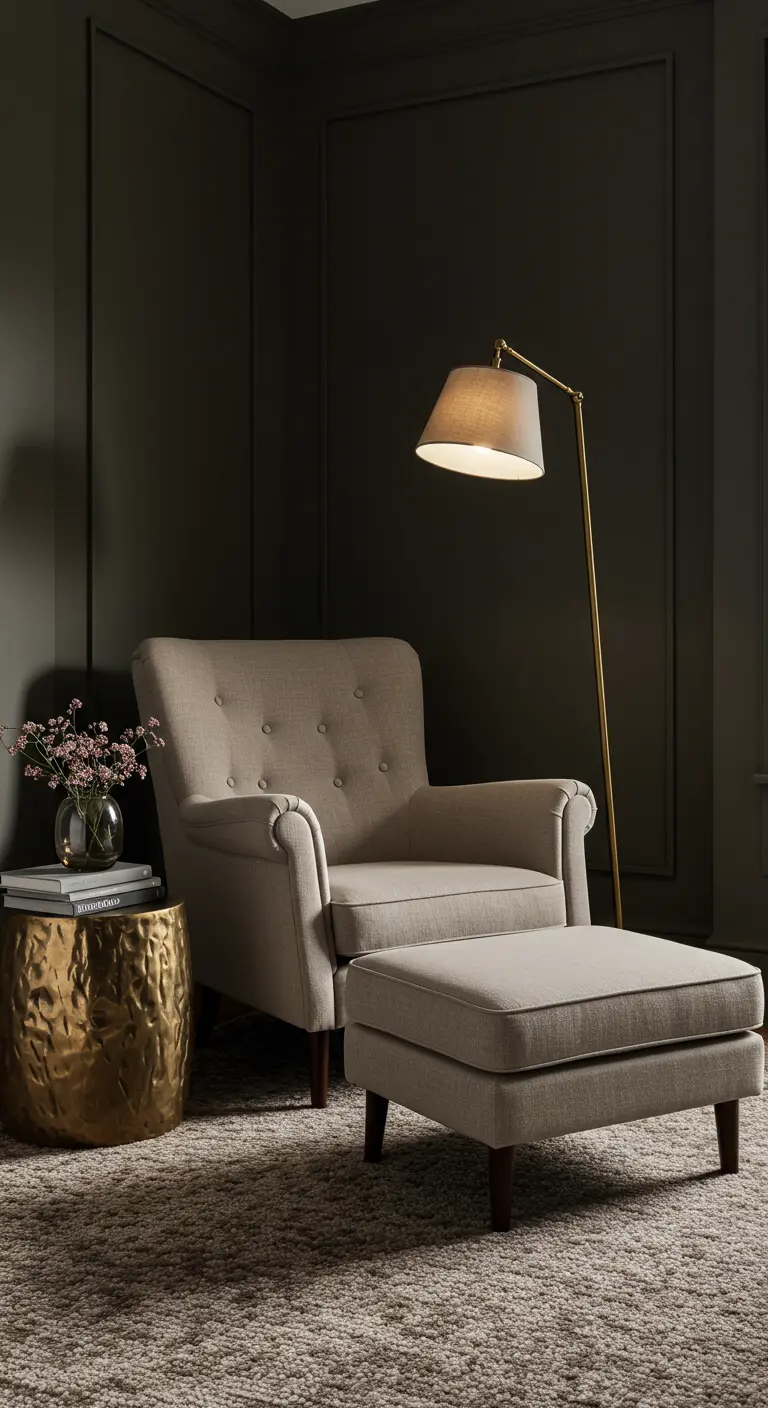
A greige palette doesn’t have to be exclusively light.
Painting a single wall or a small nook in a deep, moody charcoal creates a stunning sense of depth and intimacy.
This high-contrast backdrop makes lighter furniture, like this oatmeal-colored armchair, appear more crisp and intentional.
Complete the vignette with a warm metallic accent, like a brass side table or floor lamp, to catch the light beautifully.
9. Find Beauty in Imperfect Textures
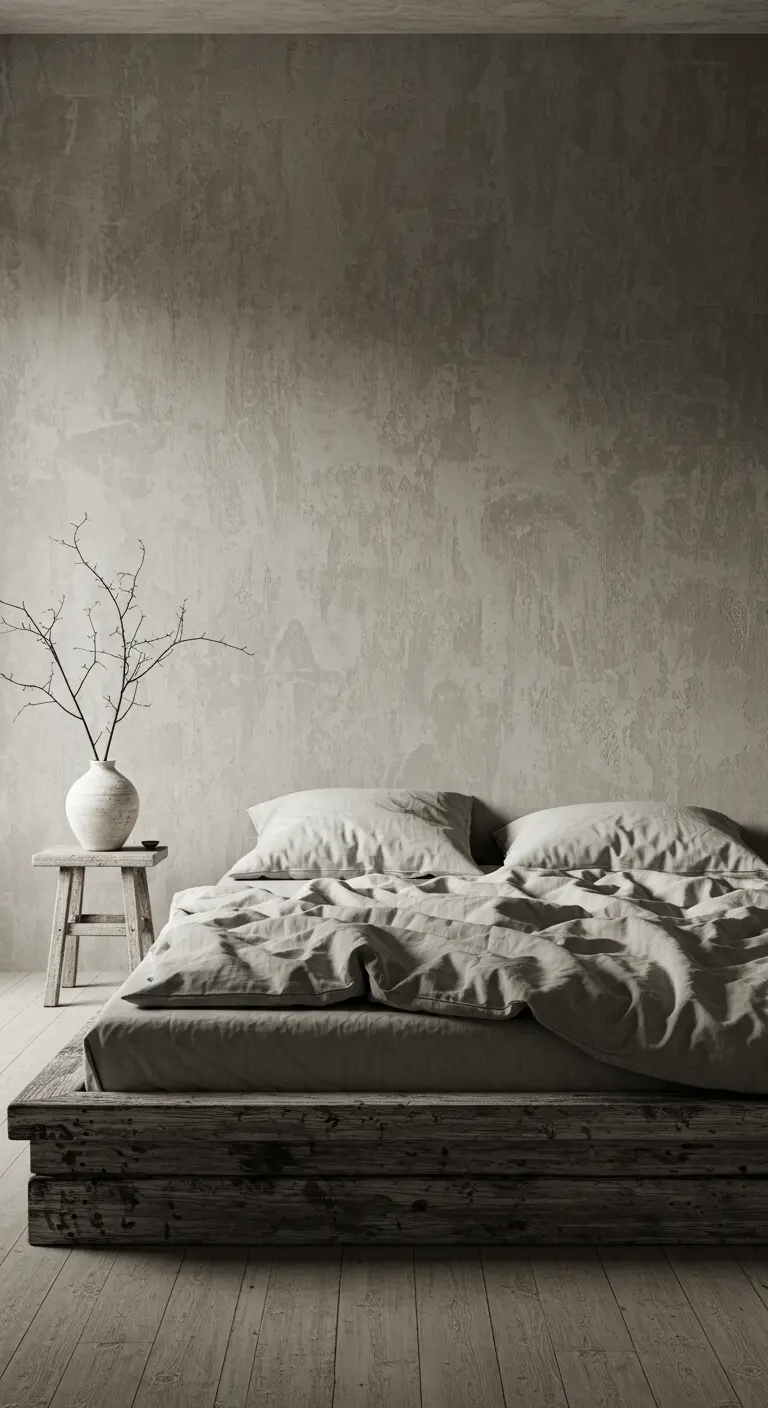
Lean into a wabi-sabi aesthetic by celebrating materials in their most natural state.
Textured, hand-troweled plaster walls create a canvas of subtle shadows that changes throughout the day.
Pair them with a simple, low-slung bed frame made from reclaimed wood and dress it in soft, rumpled linens.
Here, luxury is found not in shine, but in authenticity and tactile comfort.
10. Carve Out a Corner with Custom Seating
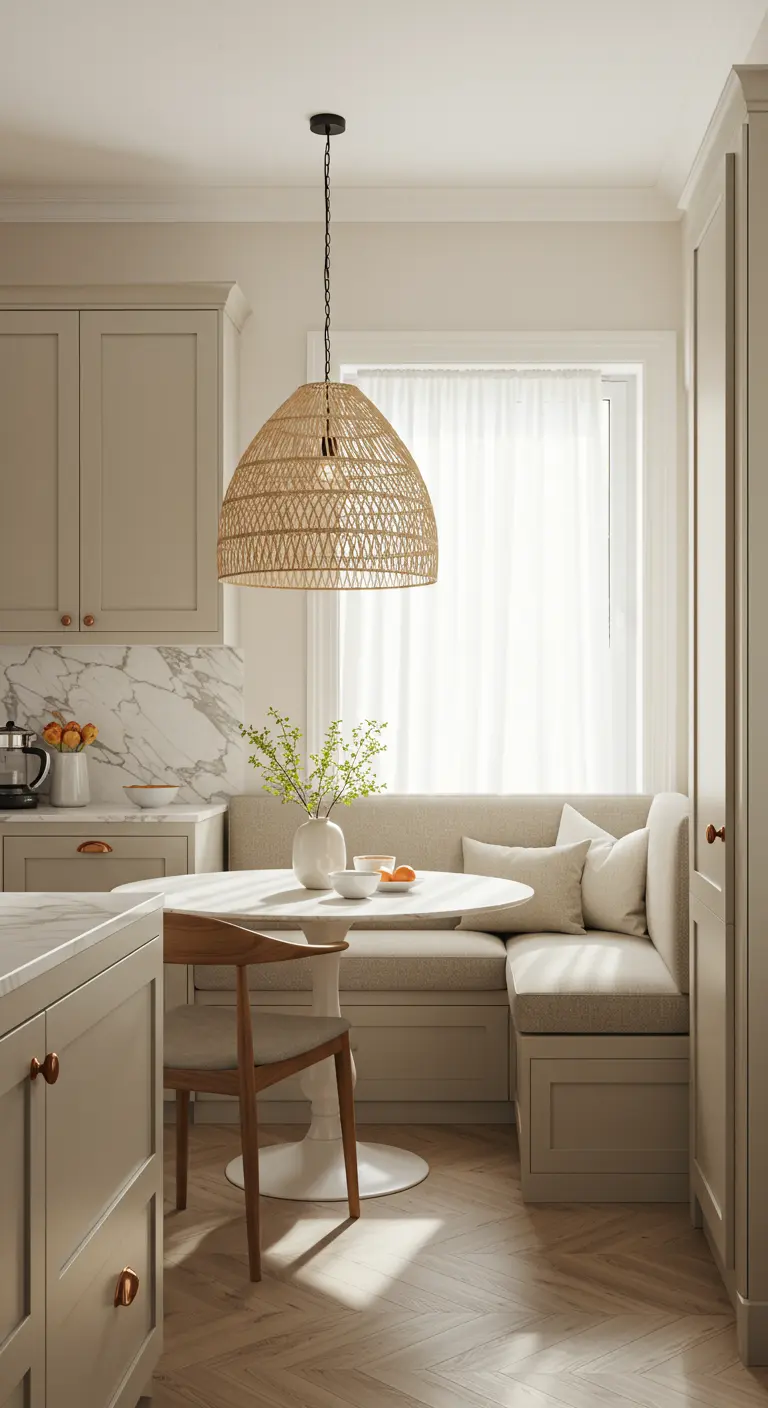
Transform an underused corner into a destination with a built-in banquette.
This approach maximizes seating in tight quarters and offers a polished, integrated look that freestanding furniture can’t match.
Upholster it in a high-performance greige fabric and pair it with a simple pedestal table to make sliding in and out easy.
It creates cozy corners that feel like your own private café.
11. Soften the Entry with Curves and Light

Make your entryway a warm and graceful welcome by counteracting its typically linear, boxy shape.
An arched mirror is the perfect tool for this; its soft curve breaks up straight lines and adds an elegant, almost architectural element.
Flank it with a pair of globe sconces that cast a diffuse, flattering light, ensuring the first impression of your home is calm and inviting.
12. Lean Into Low Ceilings
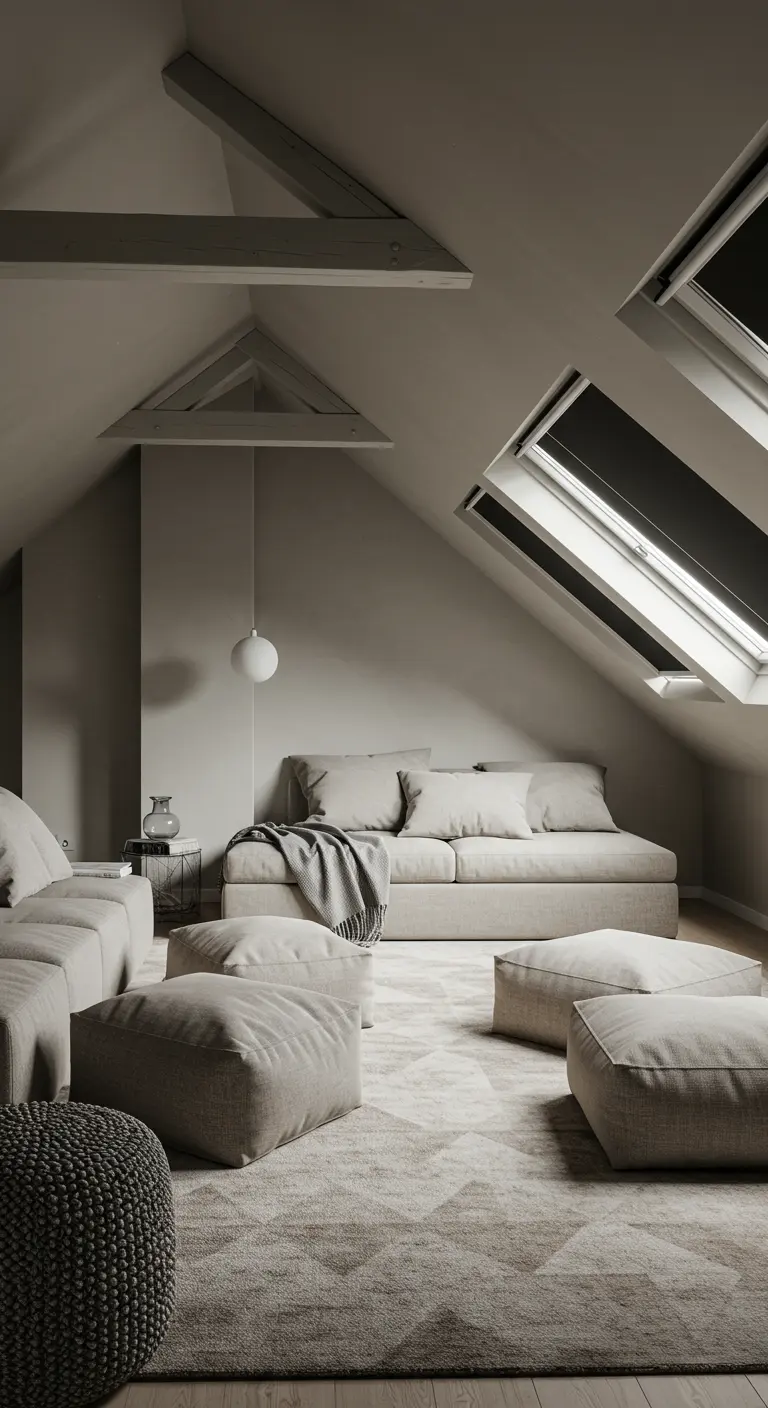
Attic rooms with slanted ceilings can feel awkward, but the key is to embrace their unique architecture.
Create a cozy, den-like lounge with low-slung, unstructured furniture like plush floor cushions and a deep sofa.
Paint the walls and angled ceilings in the same continuous shade of greige to blur the edges and make the space feel unified and expansive.
This flexible layout transforms a challenging room into an intimate retreat.
13. Use Luminous Tile for a Subtle Shimmer
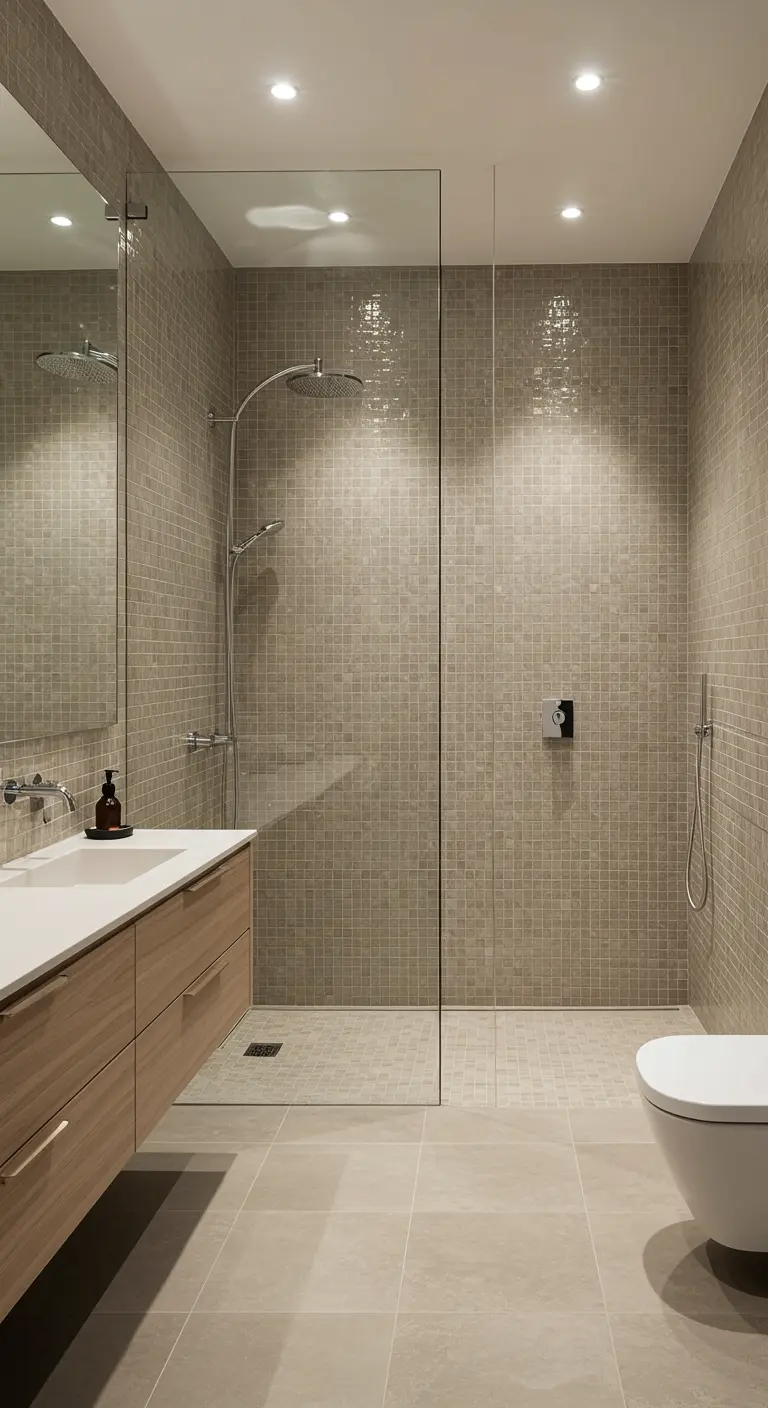
A monochrome palette can still have sparkle.
For a shower wall, select a small-format tile with a pearlescent or zellige-style finish.
Its subtle irregularities and luminous glaze will catch the light, creating a shimmering, water-like effect that adds incredible depth and vitality.
This detail, especially in a glass-encased shower, elevates the entire bathroom without disrupting the calm, tonal palette.
14. Introduce Movement with a Mobile

In a tranquil, monochromatic room, introduce a point of gentle animation.
A large, sculptural mobile, inspired by mid-century modern design, acts as a piece of kinetic art.
It slowly rotates and shifts, catching the changing light and creating subtle movement that brings the quiet space to life.
It’s a sophisticated alternative to a static painting and adds a layer of unexpected elegance.
15. Balance Ornate Details with Simplicity
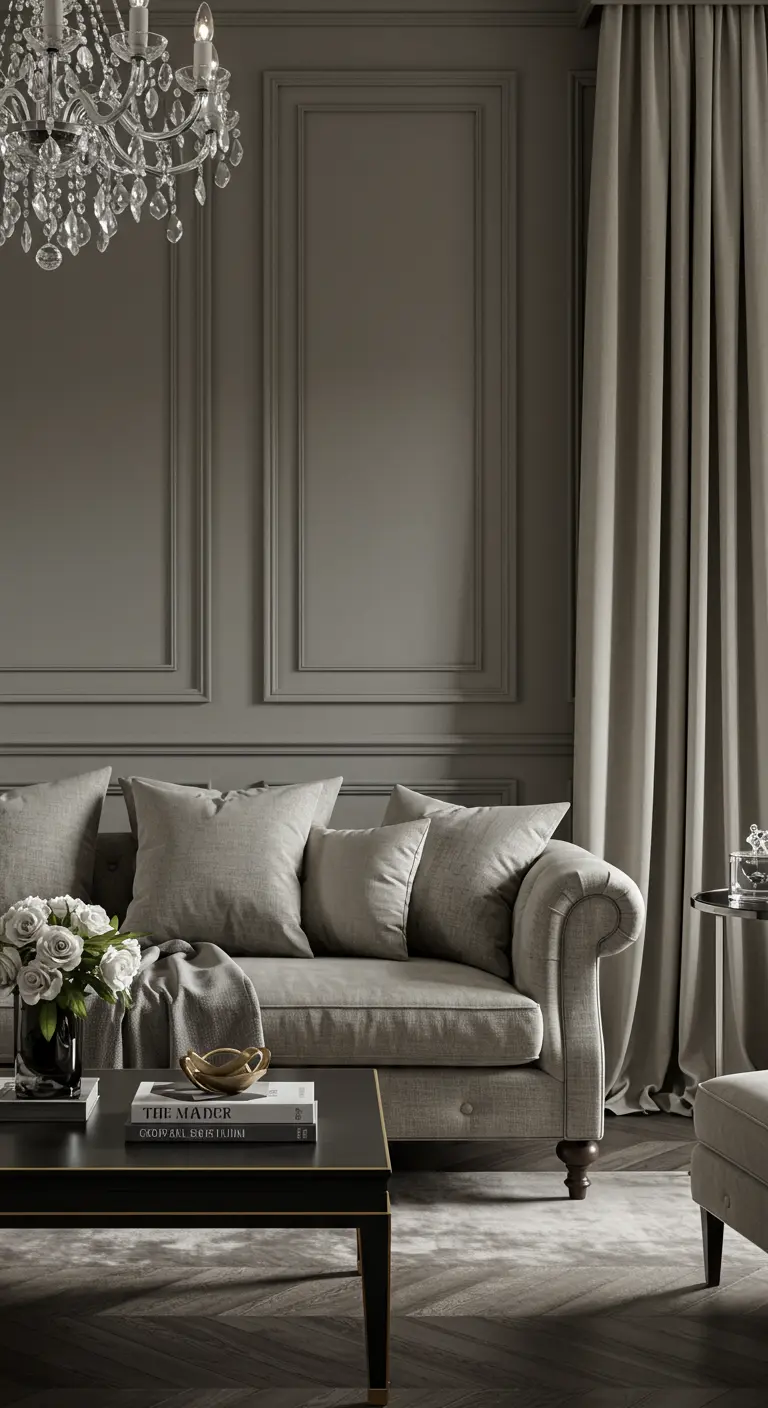
When your space has beautiful, traditional bones like intricate wall molding, the goal is to complement, not compete.
Ground the room with simple, contemporary furniture forms, like this classic sofa with clean lines and minimal ornamentation.
Hanging heavy, luxurious drapes in the same greige as the walls adds grandeur and texture while maintaining a serene, monochrome feel.
16. Illuminate Your Collections
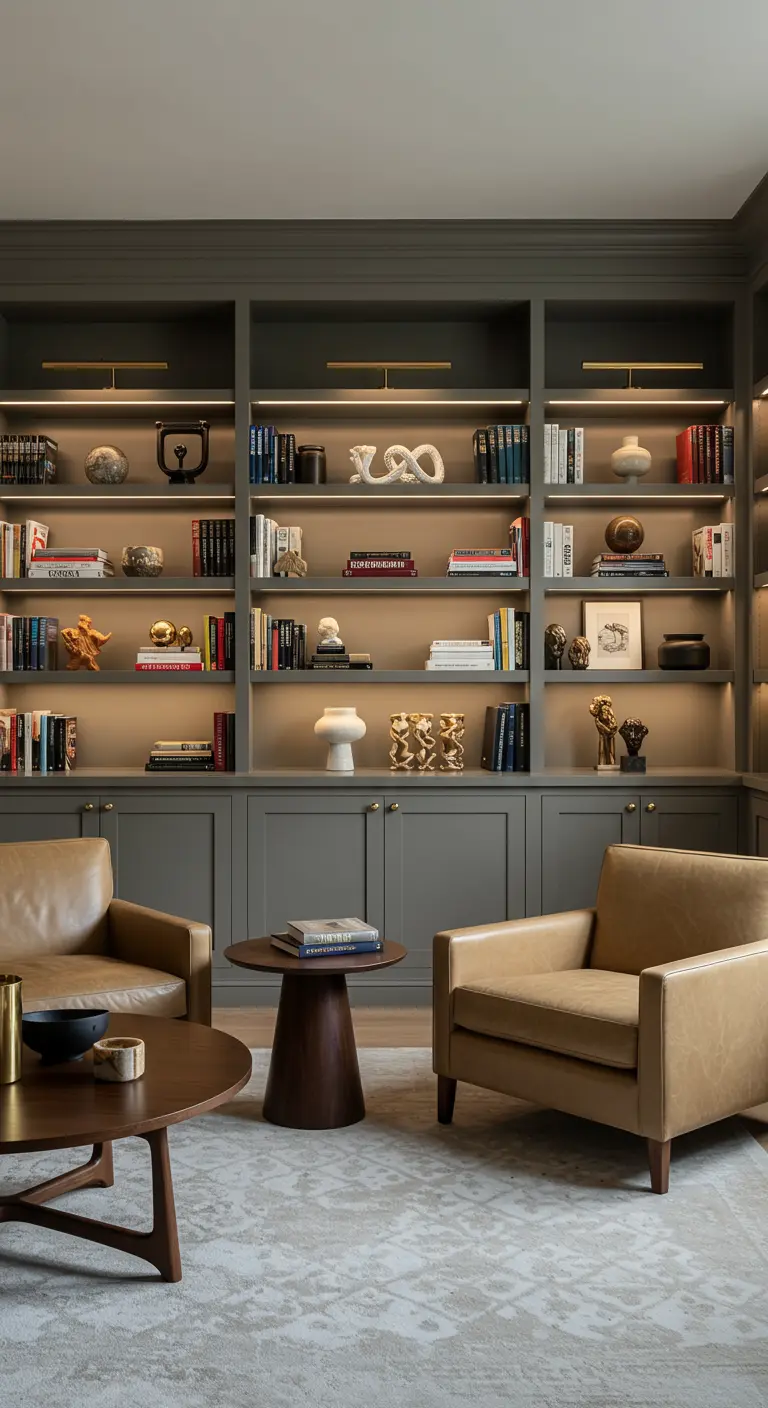
Transform standard built-in bookshelves from simple storage into a stunning design feature.
By installing discreet LED lighting along the front edge of each shelf, you wash the contents in a warm, inviting glow.
This technique highlights your favorite books and objects, turning them into a curated display much like an artful gallery wall.
It adds immense warmth and sophistication to a room, especially at night.
17. Frame the View as Your Artwork
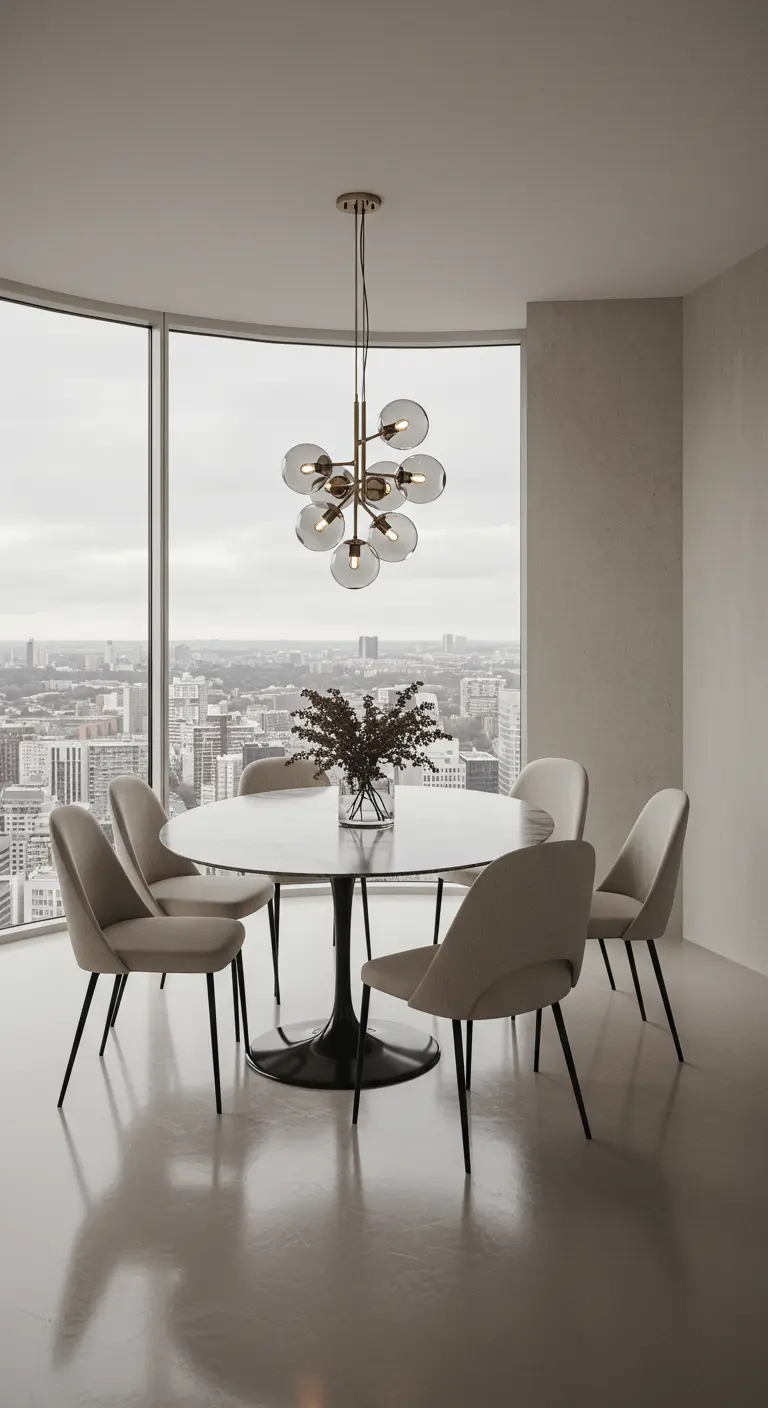
If you are lucky enough to have an expansive view, your design approach should be one of restraint.
Treat the window as the room’s main event and keep your interior choices minimal so they don’t compete.
A table with a slender pedestal base and chairs with thin metal legs keep sightlines open.
This creates a space that feels connected to the world outside, embracing a style of transitional modernism that is both elegant and understated.
18. Replace Bedside Lamps with Pendants
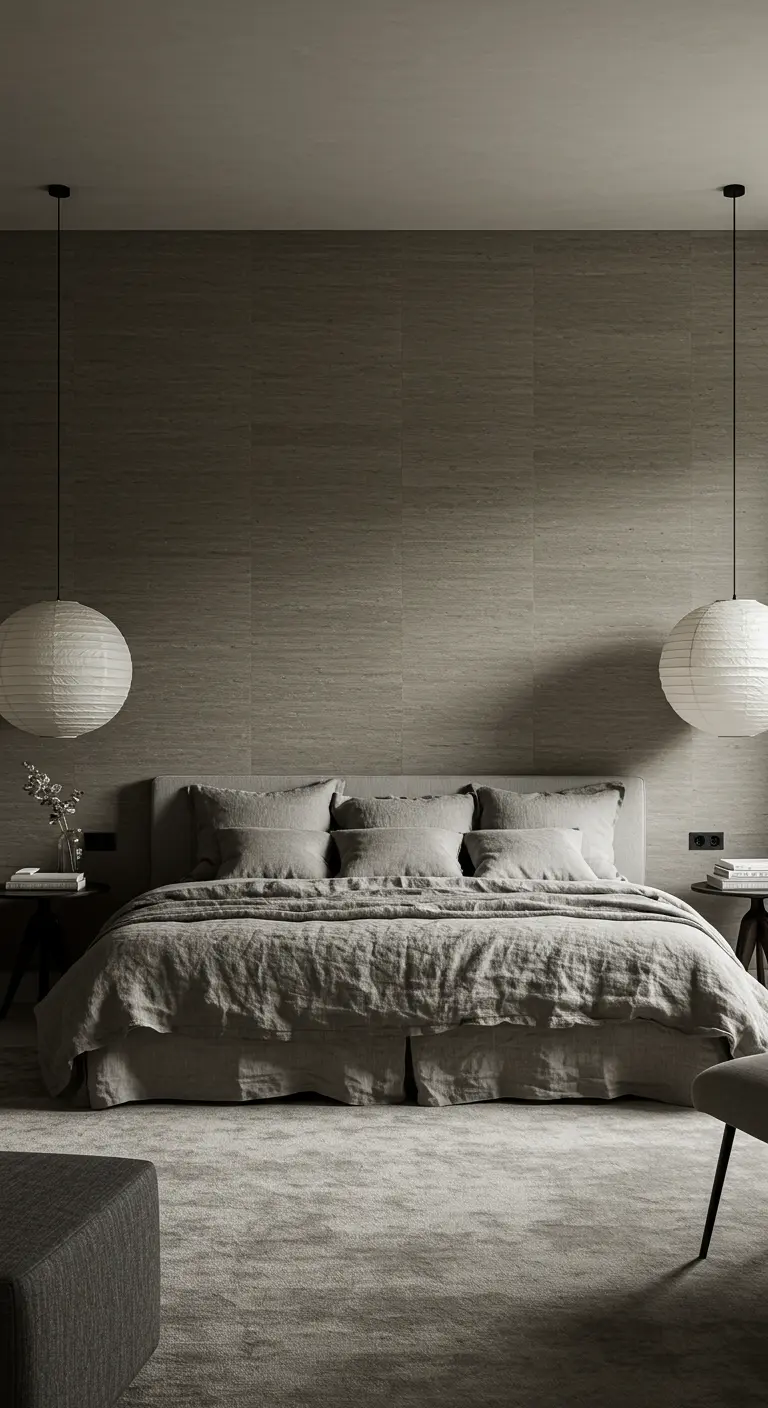
For an instantly elevated and clutter-free bedroom, hang pendant lights on either side of the bed instead of using traditional table lamps.
This small change frees up valuable surface space on your nightstands and creates a pleasing vertical symmetry.
Hanging paper lanterns, with their soft, ambient glow, are particularly effective in creating a restful bedroom atmosphere.
19. Anchor a Corner with an Arc Lamp
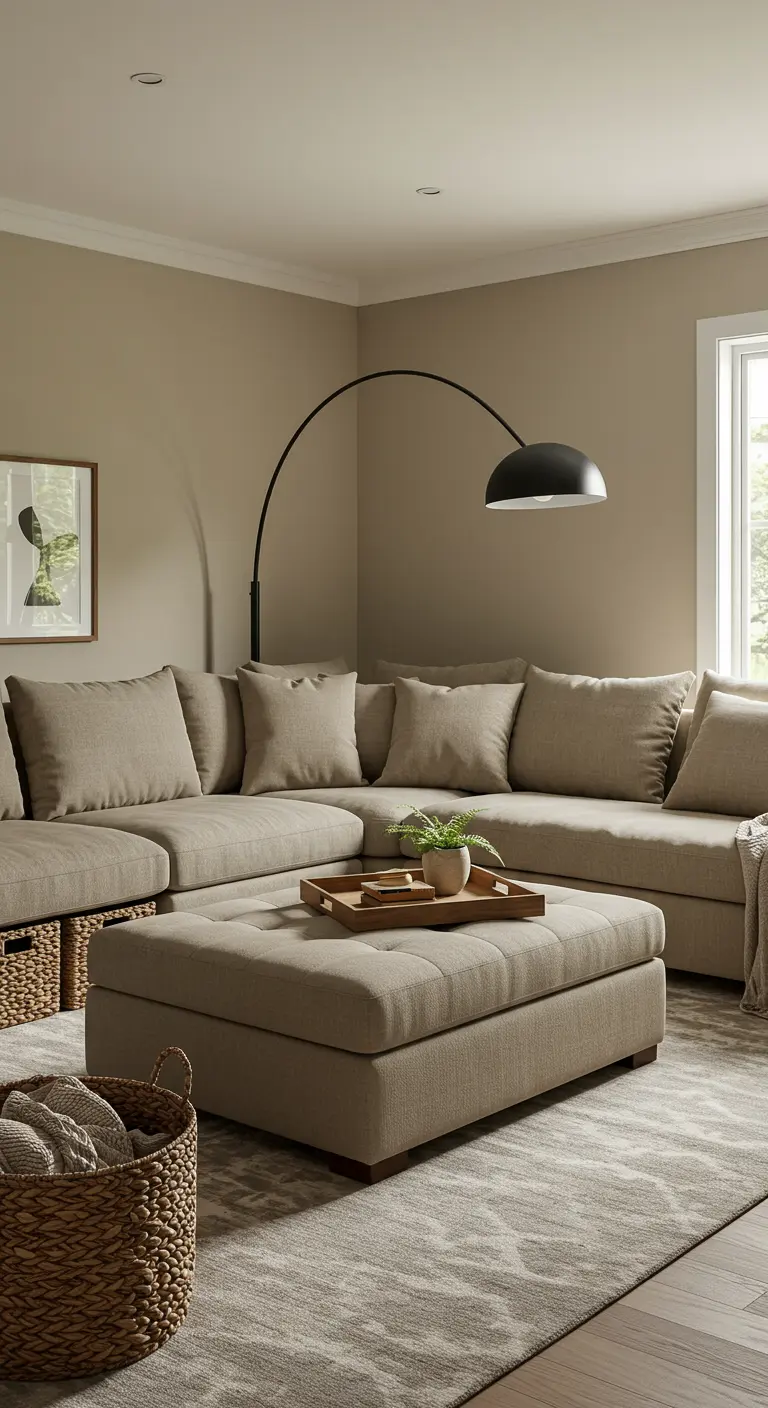
A large sectional sofa requires an equally substantial lighting solution.
An oversized arc floor lamp gracefully extends over the seating area, providing focused light without the need for complex ceiling wiring.
Its dramatic curve adds a beautiful sculptural element that can anchor the entire corner of a room.
Pair it with a large, tufted ottoman that serves as a soft coffee table, reinforcing the room’s focus on comfort and function.
20. Treat Your Stairwell as a Gallery

A tall, open stairwell presents a unique design opportunity.
Fill this vertical void with a cascading waterfall chandelier, which transforms the transitional space into a breathtaking focal point.
The fixture serves as a piece of hanging sculpture, drawing the eye upward and connecting the different floors of your home with light.
It’s a touch of understated glamour that makes a powerful statement.
21. Achieve Warmth with a High-Pile Rug
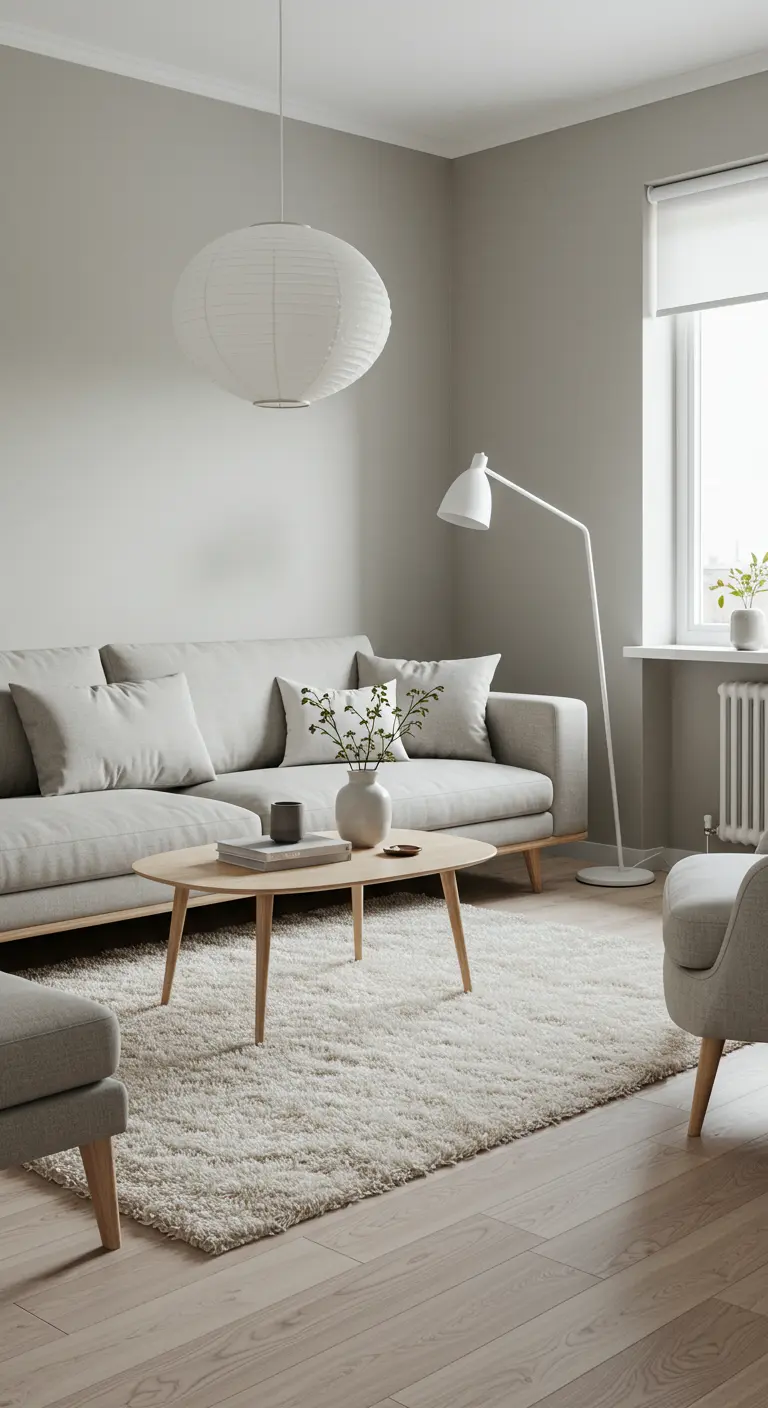
To prevent a minimalist, greige space from feeling stark, texture is your most important tool.
A thick, high-pile shag rug provides immediate warmth and a luxurious feeling underfoot.
It serves as the soft, textural foundation of the room, creating an inviting contrast to the clean lines of Scandinavian-inspired furniture.
This one element can single-handedly add a crucial layer of comfort.
22. Elevate a Utilitarian Space
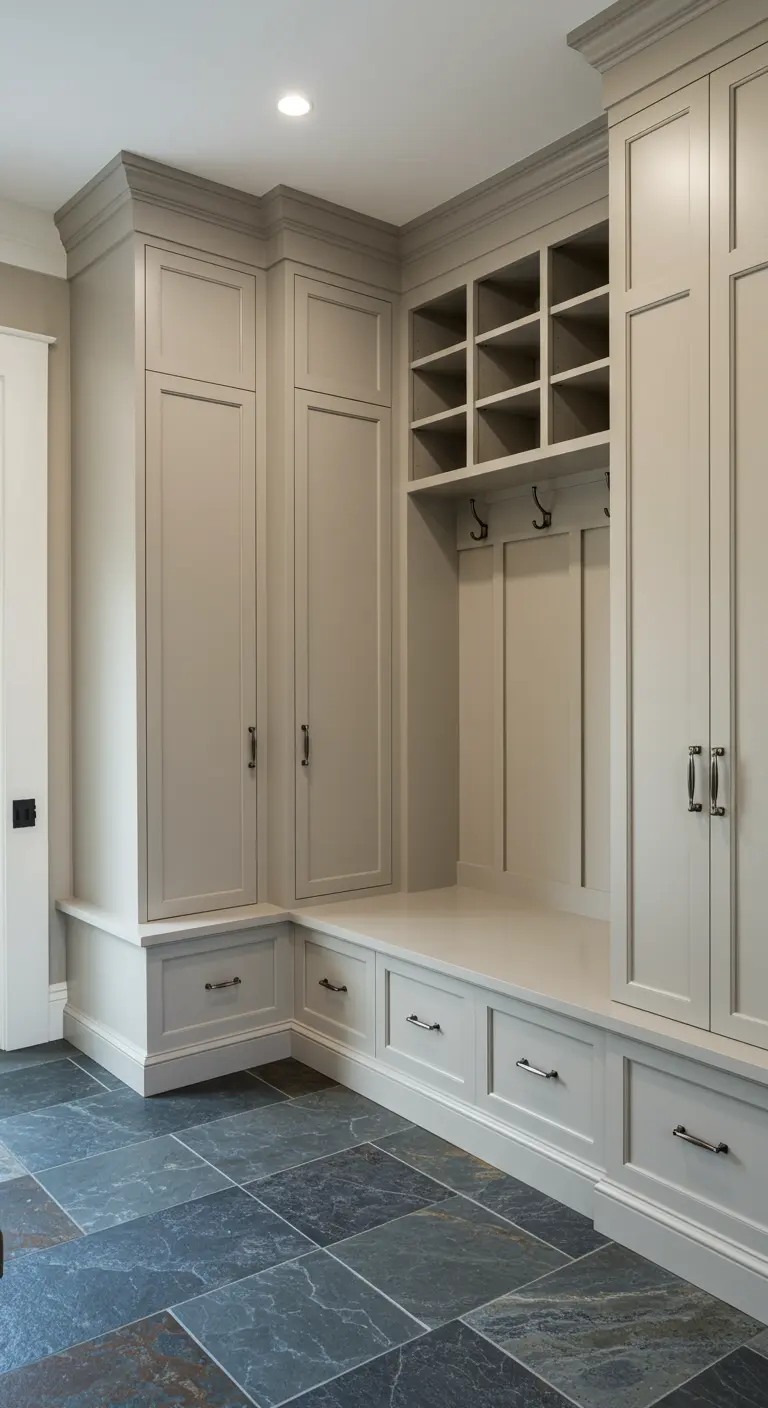
Your mudroom should be as thoughtfully designed as your living room.
Choose a sophisticated greige for custom built-ins to create an elegant, seamless wall of storage.
Contrast the soft, painted finish with a durable, dark slate tile floor, which adds a grounding, organic element and is exceptionally practical for a high-traffic zone.
This proves that even the most functional spaces can feel refined with the right material choices and hidden storage.
23. Use Symmetry for Formal Elegance
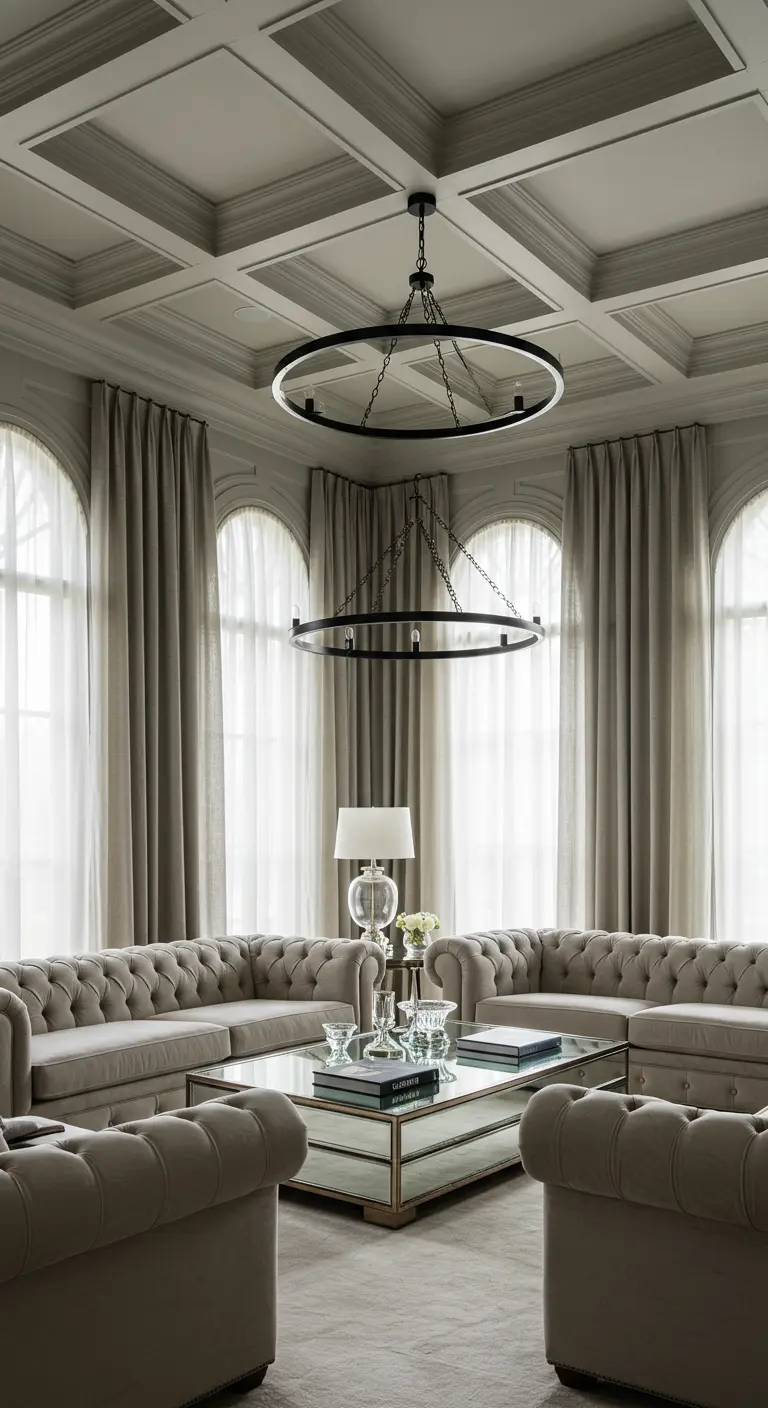
In a grand room with high ceilings and architectural details, a symmetrical furniture arrangement creates an immediate sense of calm, order, and formality.
Positioning two identical tufted sofas to face each other establishes a natural conversation area that feels both impressive and welcoming.
The balance and repetition in these refined contemporary rooms are inherently pleasing to the eye.
A mirrored coffee table in the center adds a touch of glamour and reflects the room’s light and volume.
24. Blur the Lines Between Indoors and Out
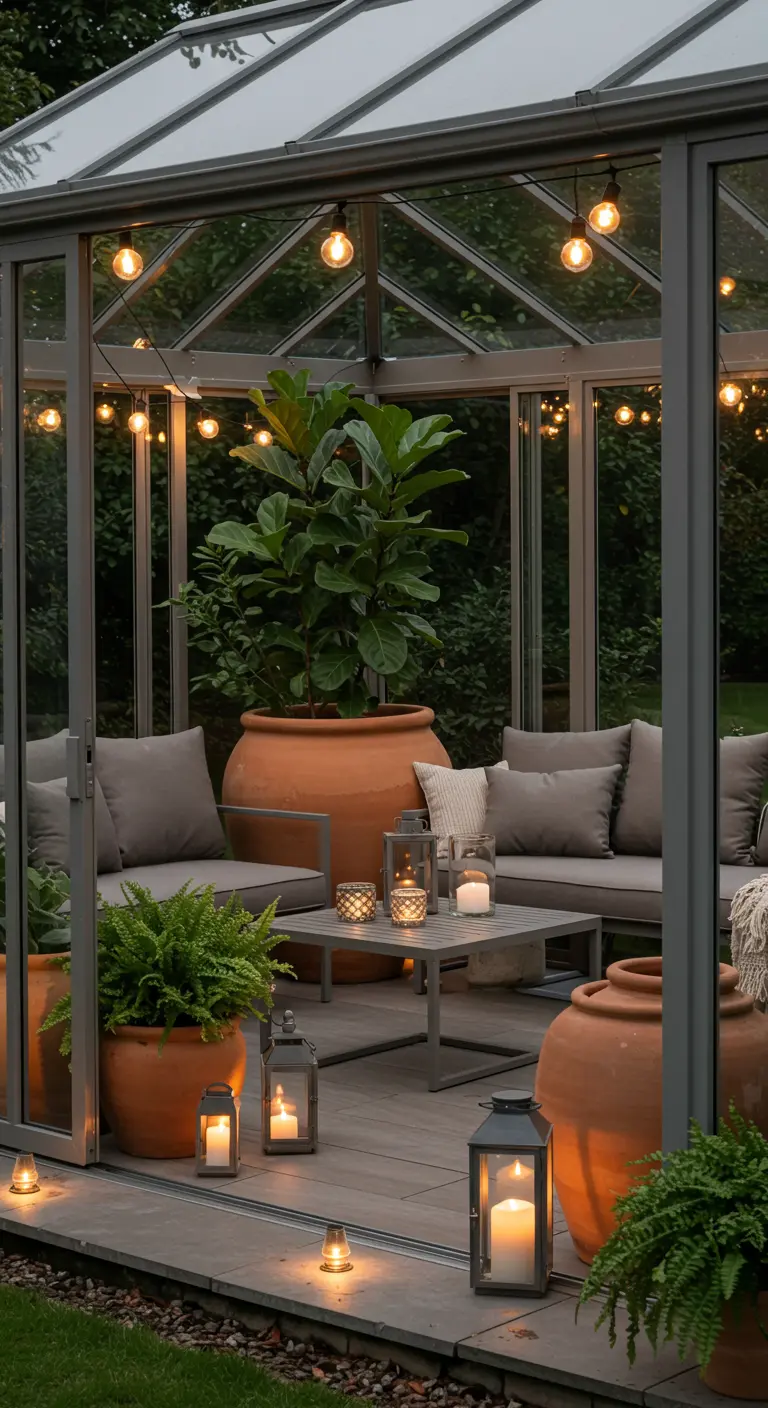
Design your sunroom as a true bridge between your home and your garden.
Use natural materials like large terracotta planters and furnishings in organic shades of greige, taupe, and moss.
The goal is to make the transition feel seamless.
Drape string lights across the ceiling to mimic starlight, turning the space into an enchanted evening retreat long after the sun has set.
